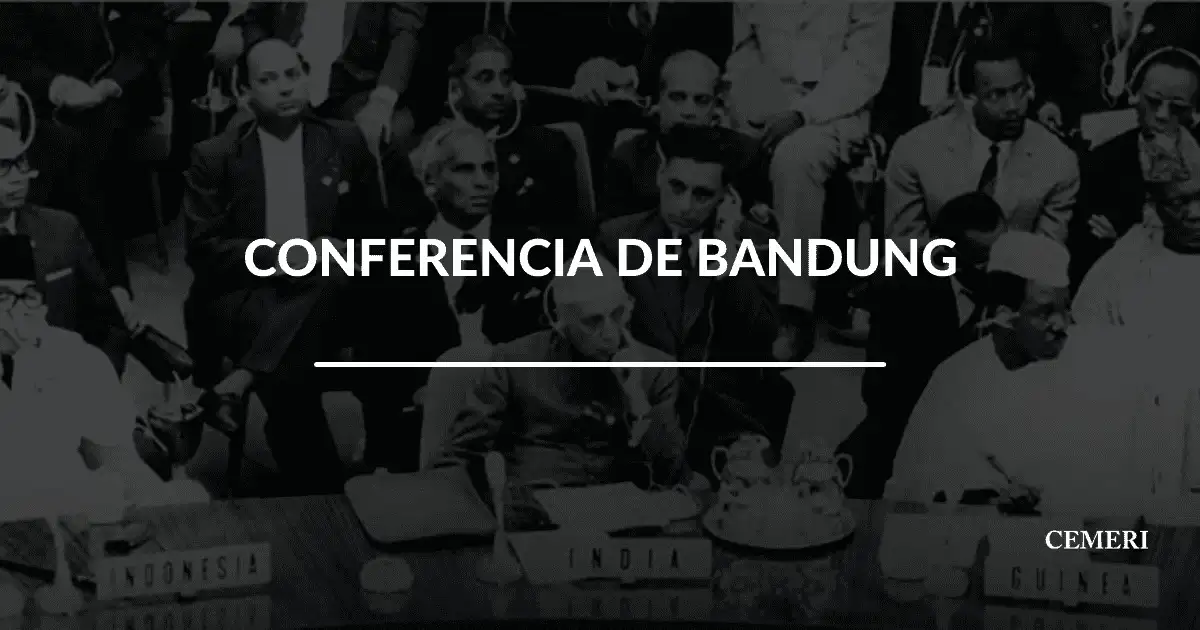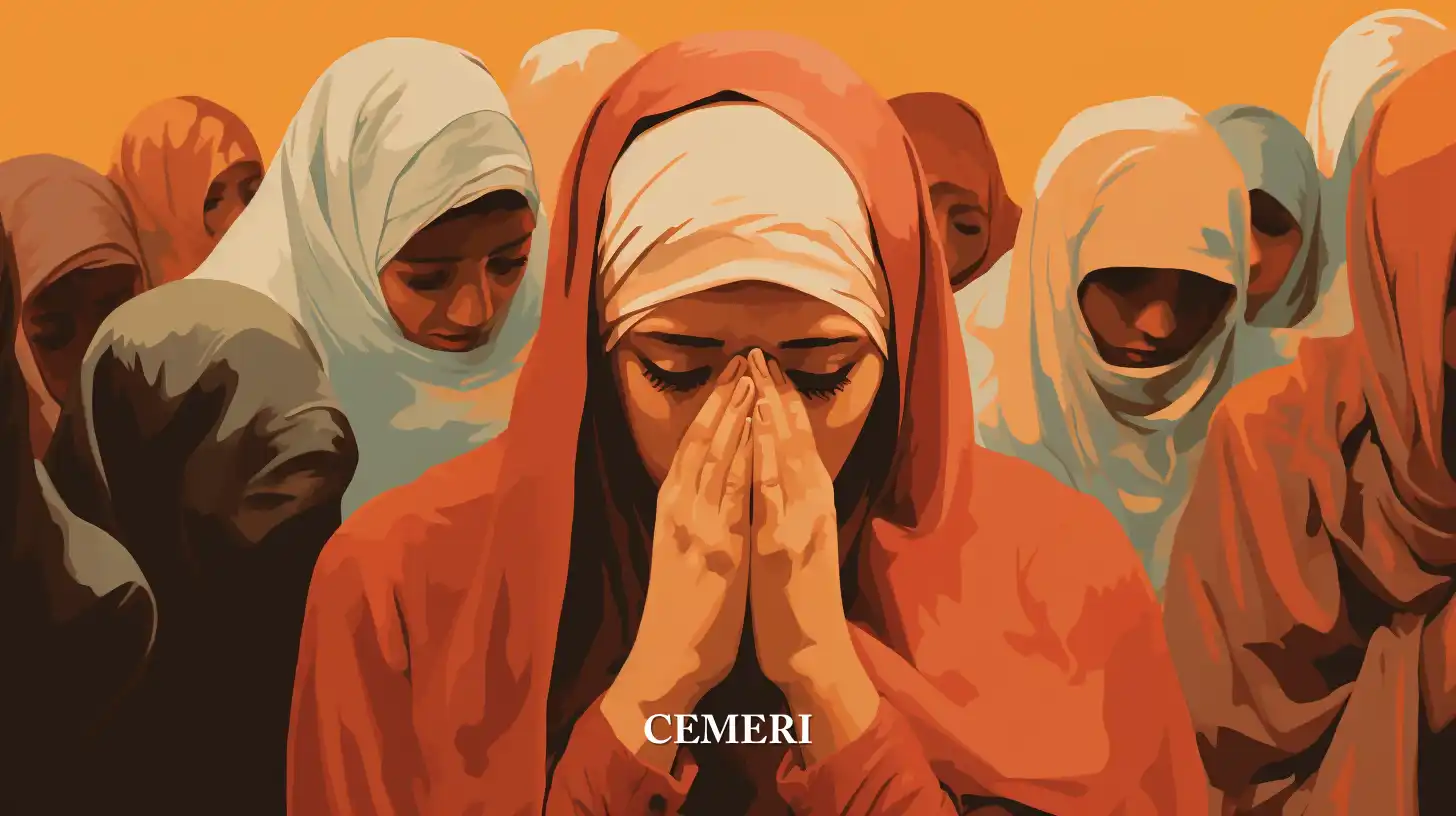Encyclopedia
Marco Olivera
What is the Bandung Conference?
- The Conference met to address common concerns about anti-colonial nationalism, self-determination, non-interference, and other issues.

The 1955 Asiatic-African Conference (also known as the Bandung Conference) was held from April 18 to 24, 1955 in Bandung, Indonesia, attended by 29 newly independent states from Africa and Asia. They met to discuss common concerns about anti-colonial nationalism, self-determination, non-interference, and great-power dominance over international affairs.
The conference also marked a major turning point in the history of universal human rights in that its formulation of self-determination as a prerequisite for fully enjoying fundamental rights became a central point of reference for anti-colonial thinkers of the twentieth century.
China played a leading role and strengthened its friendly relations with other Asian nations. The conference eventually led to the establishment of the Non-Aligned Movement in 1961. In later years, conflicts between the non-aligned nations eroded the solidarity expressed in Bandung.
The conference, co-sponsored by Burma, India, Indonesia, Pakistan and Sri Lanka, brought together the following countries:
- Afghanistan
- Saudi Arabia
- Burma
- Cambodia
- Gold Coast
- Ceylon
- China
- Egypt
- Ethiopia
- Philippines
- India
- Indonesian
- Iran
- Iraq
- Japan
- Jordan -Laos
- Lebanon
- Liberia
- Libya -Nepal
- Pakistan
- Syria
- Sudan
- Thailand
- Türkiye
- North Vietnam
- South Vietnam
- Yemeni
The states that attended comprised nearly half of the membership of the United Nations (UN) and collectively represented about 1.5 billion people. It should be noted that South Africa, Israel, Taiwan, South Korea and North Korea were not invited to the conference.
Context
The geopolitical dynamics of the Cold War provided an obvious backdrop for the discussions in Bandung. However, Bandung was not primarily about whether to take sides in the bipolar international conflict, despite the frustration of all Third World nations caused by the superpowers' chronic reluctance to consult smaller nations in what was in effect an inherently global confrontation.
Nor was the conference purely a denunciation of the corroded European empire or a breeding ground for anti-Westernism, although this sentiment was certainly present in some of the conference discourse. Rather, the meeting will perhaps be best remembered for its distinctive normative legacy regarding the relationship between self-determination and human rights. Seeking a voice and identity outside of the bipolar framework of the Cold War, delegates set out to affirm a vision of how international affairs should be conducted in the context of the unfinished struggle against colonialism, laying the groundwork for what would soon become the Non-Aligned Movement.
Although Bandung welcomed a variety of states, many with conflicting ideological positions, the participants found common ground in opposition to imperial rule and racism. Various influential regional leaders, from Egypt's Nasser (1918-1970), Burma's U Nu (1907-1995), India's Nerhu (1889-1964), Indonesia's Sukarno (1901-1970), came together to articulate guiding values. to newly decolonized states and their neighbors.
Then-Prime Minister and Foreign Minister Zhou Enlai signs autographs for fans at the Bandung Conference.
Photo: Xinhua
Human Rights and Self-Determination
Respect for universal human rights was one of the many key themes of the Bandung conference. The participants adopted a ten-point declaration on promoting inter-state cooperation in the final communiqué of the conference, incorporating the principles of the UN Charter and the Five Principles for Peaceful Coexistence, the last of which was negotiated by China. and India in 1954.
This ten-point declaration, the so-called "Bandung Principles", emphasized the need for an international society based on respect for self-determination, universal human rights, non-interference in internal affairs, sovereign equality, non-aggression and multilateralism. The statement also encouraged economic cooperation and diversification, as well as cultural and technical exchange, in an effort to free oppressed peoples from colonial and neocolonial slavery.
The document's clear reference to fundamental human rights, and the conference discussions that preceded it, present human rights as a political project that was both universal and anti-colonial.
Initially, the conference was attended by a diversity of views on the scope and application of human rights. This was partly a function of the cynical rivalries of the Cold War, but also the result of more fundamental normative disagreements about the meaning of human rights in general: how should the international community balance collective rights and individual rights? What about the relative importance of civil and political rights versus social, economic or religious rights?
Although he was a vocal critic of colonial oppression, Chinese Premier Zhou Enlai (1898-1976) opposed any inclusion of references to human rights in the conference communiqué. Having failed to contribute to the drafting of the Universal Declaration of Human Rights in 1948, Communist China was especially suspicious of human rights as a Western political resource. In the end, however, the smaller Arab, Asian and African states overcame the opposition of the Chinese delegates, with the participants settling for a definition endorsed by the UN Charter and the 1948 Declaration.
However, the Bandung definition of human rights included a caveat: that self-determination was a prerequisite for the enjoyment of all other fundamental rights.
Only once freed from the colonial yoke were states able to develop friendly cooperation based on the “Bandung Principles”, the first of which made explicit reference to fundamental human rights and the UN Charter. Thus, delegates agreed to a broad universal understanding of human rights in 1955, which applied to colonizers, colonized peoples, and newly liberated nations alike, but was also especially suited to challenging colonial rule.
At the same time, the Third World-driven conception of universal human rights was firmly aligned with strong state sovereignty and in the context of non-intervention. Aversion to intervention, associated as it was with formal and increasingly informal imperialism, was a key foreign policy of newly decolonized states. After all, of the ten principles listed in Bandung, five relate to state sovereignty and territorial integrity.
Likewise, human rights were no longer to be the exclusive domain of “paternalistic” Western powers, nor were they to be granted or exercised selectively. Thus, by universalizing human rights and placing rights in a framework of self-determination, Bandung contributed to unhinging the educational project inherent in the 1948 Declaration. The Third World would not take the same position three decades later, when [cultural relativism]( https://cvc.cervantes.es/ensenanza/biblioteca_ele/diccio_ele/diccionario/relativismocultural.htm#:~:text=El%20relativismo%20cultural%20es%20una,la%20interpretaci%C3%B3n%20de%20las%20culturas .)and “Asian values” are they slipped into the conversation topics of the Third World.
Consequences of the Bandung Conference
The conference aimed to change the relationship between developing and developed countries. It led to the establishment of the Non-Aligned Movement (MPNA or NAM).
It also introduced the term “Third World” which referred to Asian, African and other developing countries in Latin America that refused to side with one of the Cold War blocs. He also described an emerging community of nations that shared a colonial experience.
The new coalition used this unique characteristic of developing countries to resist the exploitation of former colonies under the new architecture of global politics that emerged from decolonization.
This concept led to the introduction of the idea of the “right to development”. Developing countries, dissatisfied with the Bretton Woods monetary system, pushed for the New International Economic Order (NIEO). They failed to replace the Bretton Woods system, but their efforts gave rise to UNCTAD (United Nations Conference on Trade and Development), a UN body responsible for dealing with development issues through trade and investment.
Developing countries pushed for the adoption of the Charter of Economic Rights and Duties in 1974. This charter recognizes the importance of restructuring the world economy to allow for greater participation by developing countries.
They also established South-South Cooperation, a UN framework for collaboration among developing countries. This was to ensure that developing countries could escape the fate of "dependency" in "North-South" economic relations.
Developing countries, inspired by the solidarity gained from the Asian-African Conference, continued to push for economic reforms between the 1950s and 1970s. But their vigor began to wane in the 1980s with leadership changes in each of the countries. conference founders.
Principles of the Bandung Conference
At the end of the Conference, delegates approved a ten-point statement known as: The Bandung Ten Principles, which state:
- Respect for fundamental human rights and for the purposes and principles of the Charter of the United Nations.
- Respect for the sovereignty and territorial integrity of all nations.
- Recognition of the equality of all races and all nations, large and small.
- Refrain from interventions or interference in the internal affairs of other countries.
- Respect for the right of every nation to defend itself or in collaboration with other States, in accordance with the Charter of the United Nations.
- a) Refraining from participating in collective defense agreements with a view to favoring the particular interests of one of the great powers.
- b) Abstention by any country to exert pressure on other countries.
- Refrain from acts or threats of aggression and the use of force in comparisons of the territorial integrity or political independence of any country.
- Composition of all international aspects with peaceful means, such as treaties, conciliations, arbitration or judicial composition, as well as with other peaceful means, according to the free selection of the parties in accordance with the Charter of the United Nations.
- Promotion of mutual interest and cooperation.
- Respect for justice and international obligations.
New Africa-Asia Strategic Partnership
In 2005, on the 50th anniversary of the Bandung Conference, the leaders of Asian and African countries met in Jakarta and Bandung to launch the New Asian-African Strategic Partnership (NAASP). They pledged to promote political, economic and cultural cooperation between the two continents.
In 2015, on the 60th anniversary of the Conference, representatives of 109 countries from the two continents gathered in the Indonesian cities of Jakarta and Bandung to commit to greater pragmatic cooperation in the economic and trade fields.
On April 24, 2015, heads of state and representatives of 91 countries pose for a group photo at the commemoration of the 60th anniversary of the Asian-African Conference held at the 1955 Asian-African Conference venue in Bandung, Indonesia.
Photo: ASEAN
Sources
SIN FUENTES

